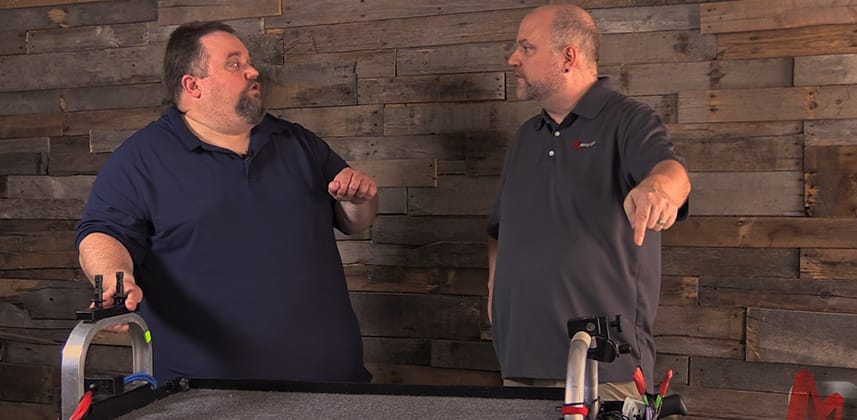| Series |
|---|
Rich Roddman is a guest contributor to this Insight. He is a professional Digital Imaging Technician and colorist based out of Tampa, Florida. His company is SilverBox Studios. His clients include WWE, National Geographic, Major League Baseball and Harley Davidson.
DIT Fundamentals: Selecting Your DIT Cart
Part 1: Surveying Entry-Level, Mid-Priced and High-End DIT Carts
“If you aim at nothing, you will hit it every time.” – Zig Ziglar
In the year 1999, I (Patrick) was a 10-year veteran of the New York City post-production scene. And my career was stuck in the mud. I was working on A-list jobs with A-list companies in a top post-production house… and I didn’t know where I wanted to go from there, in terms of my career. The work I was doing was top-notch but I didn’t feel satisfied or enriched.
My problem? I didn’t know what I actually wanted to do.
It was around then I first heard the Zig Ziglar quote above: “If you aim at nothing, you will hit it every time.”
Bingo.
For the prior 10 years, I aimed at nothing, except a bigger paycheck. And I hit it, with a bullseye. I made good money, earning zero job satisfaction.
That’s when I set my eyes on a goal. For me, it was to work in long-form, to work with above-the-line talent on a one-on-one basis and do it from the East Coast of the US. I finally set a goal and aimed at it. And while there’s no guarantee you’ll ever actually hit your target, this Insight is about one of those potentials career goals—working on-set.
If your career aim is to work on-set then you should understand the craft of the Digital Imaging Technician (DIT)
Of course, there’s always the ‘chicken and the egg’ problem of finding work on-set. And the easiest way in is as a Production Assistant. But if you want to move up the ranks, you’re going to need to set a target.
One potential target is working as a DIT
Maybe that path is your destination. Or maybe it’s a stop-over to get you into the camera department or down a color correction career. Either way, the entire production eventually runs through the DIT… making it a great craft to learn about. Even if you don’t want to be a DIT, you’ll be interacting with the DIT at some level, eventually—so this series is a great way to pick up some of the lingo and a lot of the tradecraft.
In this 4-part series, professional DIT Rich Roddman talks about the gear of his craft
As any craftsman will tell you, the craft of the DIT is more than just about the gear. But if you are not a master of your gear then how can anyone expect you to be a master of the craft?
In Part 1, Rich shares with you his thoughts on key bit of gear: The DIT Cart
Don’t be fooled, the Cart is an extremely important tool for a professional DIT… for reasons we talk about in this video. Rich explains the value of the cart and the various bits and bobs you want to have—if you want to be an asset to the on-set team.
In this Insight Rich shares his entry-level cart that sustained his business for the first few years. Then we look at his current cart. Plus, he shares the high-end cart he’s lusting after but hasn’t yet pulled the trigger to buy.
If you want to learn more about the Craft and Tools of DITs, let us know in the comments!
And leave suggestions for on-set software or skills you’d like us to tackle!
In Parts 2, 3 and 4 Rich will share how he kits out his cart depending on the needs and budget of a production. Below the video are links to various items mentioned here in Part 1.
Enjoy!
-pi
Mentioned in this Insight
- SilverBox Studios – Rich Roddman’s professional website
- Magliner Junior Cart – Rich’s current cart. Some of Rich’s accessories include the Umbrella stand, 6″ J-Hook, Tape Laynard for Grips and Gaffers, Dual Baby Pin
- Magliner Steadicam Cart – As mentioned, with attachments for holding a Steadicam.
- Innovativ Carts: Scout – The high-end cart


